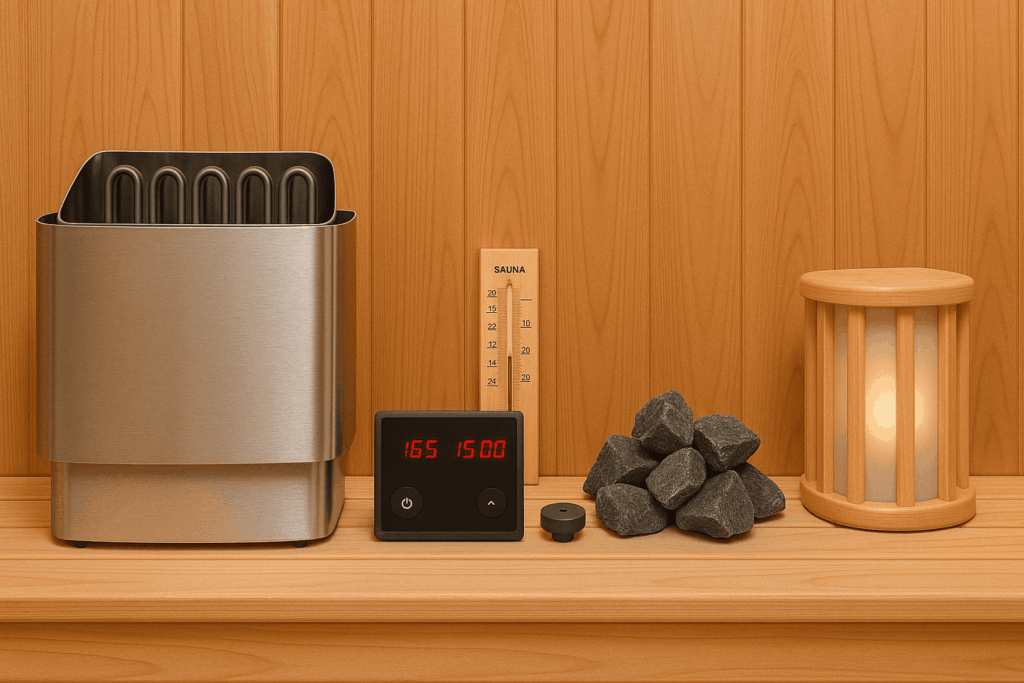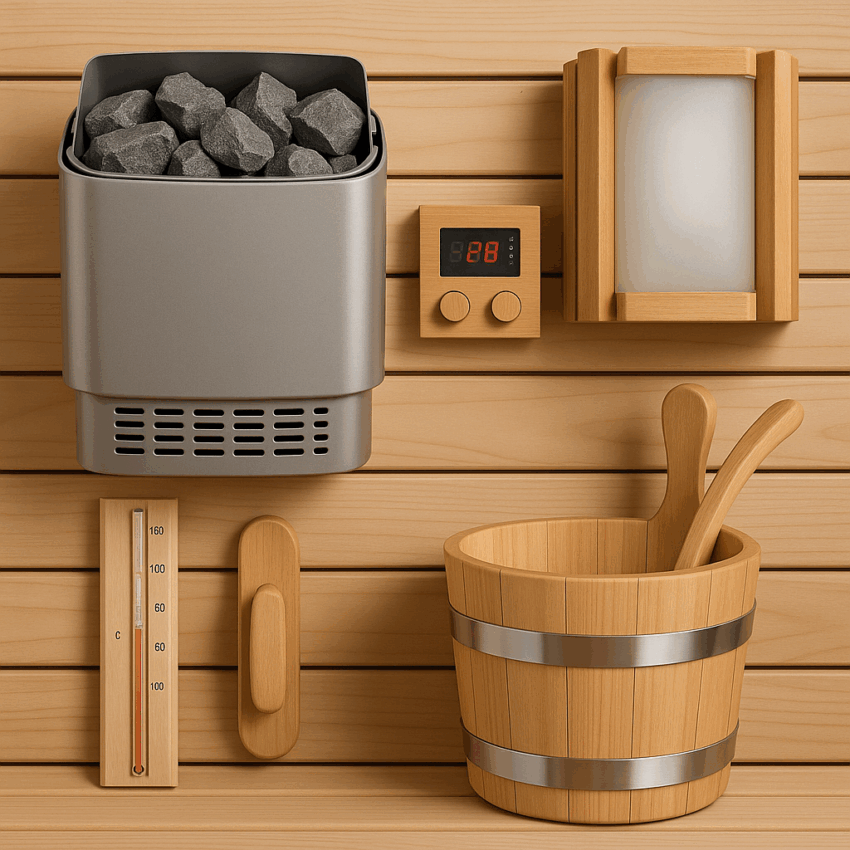Every sauna is an engineered system. Each part plays a critical role in generating safe, consistent heat. Here’s what you need to know.
A sauna functions as a thermal system built around heat generation, control, insulation, and safety regulation. Each part—whether structural or electrical—must operate reliably under extreme temperature conditions. Whether you’re maintaining a traditional, infrared, or hybrid setup, understanding key sauna parts helps reduce risk, optimize performance, and prolong service life.
Essential Mechanical and Electrical Sauna Components
1. Heater Unit (Core Thermal Generator)
- Electric sauna heaters are standard in home units, rated between 3–9 kW depending on room volume.
- Infrared panels emit radiant energy without heating the air.
- Wood-burning stoves are used in off-grid or remote installations.
Considerations:
- Heater capacity must match room volume (cubic feet).
- Look for models with UL/ETL certification and thermal cutoffs.
2. Temperature Sensor & High-Limit Probe
- Monitors cabin air temp; signals heater to cycle or shut off.
- High-limit sensor disconnects power if temps exceed a preset safety threshold (often 194–200°F).
Maintenance Tip:
Replace sensors every 3–5 years or if temperature control becomes erratic.
3. Control Panel (User Interface)
- Digital controllers regulate temperature, timer, and lighting.
- Manual dials still exist in basic units but lack precision.
- Smart controllers allow Wi-Fi/app integration.
Mounted outside the sauna or in a sealed enclosure.
4. Heating Elements (Internal Heater Components)
- Tubular electric elements or ceramic rods.
- Most degrade over time due to oxidation or residue buildup.
Replacement cycle: 5–10 years depending on use.

Structural and Safety Parts
5. Sauna Door Handle and Hinges
- Handles must be thermally insulated and safe to touch under high heat.
- Hinges should be rust-resistant and rated for high humidity environments.
6. Ventilation Grilles (Passive Airflow Management)
- Floor-level intake + ceiling exhaust provide oxygen exchange.
- Required to avoid CO₂ buildup and to regulate moisture.
7. Door Gasket / Seal
- Ensures airtight closure to retain heat.
- Worn seals lead to heat loss and longer warm-up times.
Accessory-Level Sauna Components
8. Thermometer & Hygrometer
- Used to monitor temperature (°F/°C) and humidity (%RH).
- Essential for traditional saunas to balance dry and steam levels.
9. Light Fixtures (Interior Sauna Lighting)
- Must be heat-resistant and moisture-rated (IP44 or higher).
- Chromotherapy fixtures offer color-adjustable LED benefits.
10. Sauna Stones (Traditional Only)
- Retain heat and allow for steam bursts when water is added.
- Use only certified igneous rocks (peridote, olivine); others may explode when wet.
Common Replacement Sauna Parts
| Component | Expected Lifespan | Maintenance Tip |
|---|---|---|
| Heating elements | 5–10 years | Replace if uneven heating or corrosion |
| Temperature sensor | 3–5 years | Calibrate annually or replace as needed |
| Door seals | 2–4 years | Inspect for cracks or warping |
| Sauna rocks | 1–2 years | Replace if cracked or coated in residue |
| Control panel interface | 5–7 years | Check for display or keypad malfunction |
Research confirms that regulated thermal environments with functional safety systems reduce risk of heat-related injury and optimize physiological response (NIH – Heat therapy: Physiological mechanisms and applications)
Conclusion
Every sauna depends on precise coordination between thermal, electrical, and structural parts. Whether building or repairing a unit, understanding how each component functions is essential for safe and reliable operation. Regular maintenance and quality replacements prevent system failure and keep your wellness investment running efficiently for years.it needs maintenance is essential for anyone serious about home or commercial sauna care.
